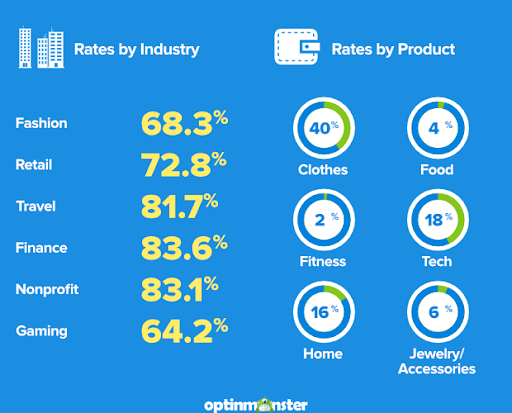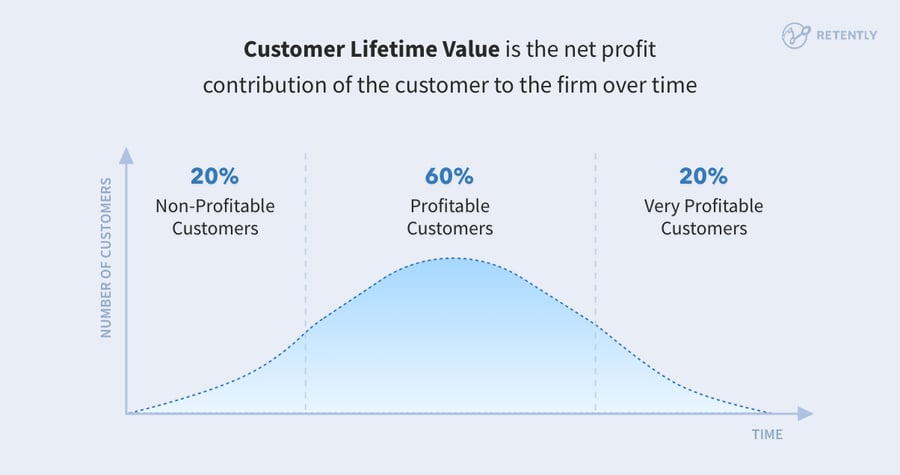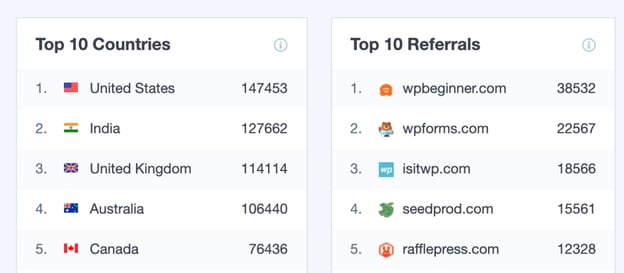Consider your hypothetical customer. Our aim is to paint a picture of what kind of customer they are - how much money they will spend, on what, how often, and how easy or difficult it will be to ‘convert’ them to our product.
Let’s start by assuming that they’re human. That’s not particularly edifying, so let’s add more detail.
Let’s say that they are a man. Still not helpful. Let’s now say that they are a man in his early twenties, who is single, and lives in a lower-income part of a particular city.
Our profile of this person is now a lot more complete, although of course there are more details we can imagine or add. We can consider these as the “dimensions” of a given customer.
In the same way, Google Analytics allows its users to collect fully customized dimensions in a digital sense. Now, as well as knowing the personal details of the customer, we can collect and track data about how customers engage with an online store.
We can collect each of their decisions and aggregate them to show crucial information about how they use the site. We can find out key information about purchases that were not made, or we can infer useful information about purchases that are made, and apply that more broadly.
Analytics are important both for business to customer and business to business commerce. B2C and B2B ecommerce platforms both benefit tremendously from data analytics.
Google Analytics has a wide range of custom dimensions that can help any online store. In this article, we’re going to look at seven of the most useful that can apply to many different categories of business or eCommerce. Google Analytics can also provide cloud based solutions to give you even more control over the data.
1. Product Details
There is a very wide range of dimensions that you can track relating to products. The essential idea is that you can track which products are sold with one another in combination, which products customers attempt to buy but are out of stock, and any characteristics or qualities of a product that are unique.
Product-level analytics can allow you to make more educated decisions about sales. For example, if a multipack of a product sells particularly well, you can infer that other products might sell well in multipacks too.
Take a restaurant or takeout place as an example. If customers often buy one item and a coke at a certain time, then you can infer that you can cross-sell these items as a meal deal for that particular time.
If we continue to use food as an example, if a pizzeria sells a lot of takeout pizzas in one size, it also stands to reason they should offer all the pizzas in that size.
This kind of information can be vital for small ecommerce businesses where operating at the margins is the norm, and cross-selling and upselling are vital ways to increase those marginal profits.
2 Cart Details
 (Cart abandonment statistics. Image Source)
(Cart abandonment statistics. Image Source)
Google Analytics’s custom dimensions can track cart details effectively. They can track information about cart abandonment by showing the time and moment at which a customer leaves a website despite having items in their cart.
This dimension can show “chokepoints” in the customer experience, where customers either decide against making a purchase explicitly or decide that something in the process is too difficult. You can then modify these parts of the customer journey to ease the process or add incentives to continue. Then if you have the best POS system in place, purchases will all go smoothly.
It can also track information about whether or not customers who come from a particular source ever add things to their cart or whether they’re just window shoppers. The data can help you understand whether you’re appealing to your ideal client base.
Certain types of marketing are less effective than others, so in the case that a paid-for source of marketing brings customers who never add anything to the cart, you can suspend that line of marketing and try a new one.
3. Form Details
Forms are an easy source of data collection to understand your customers better, and of course, Google Analytics offers dimensions to better understand forms.
Form abandonment is relatively common. For whatever reason, customers can struggle to finish filling out forms. Tracking this as a dimension can help us understand why and repair the issues.
If the tracking data suggests, for example, that the vast majority of form abandonment happens on mobile, and perhaps more specifically on Apple operating systems, then you know that this is something you should fix straight away.
If form abandonment is universal across formats and operating systems, perhaps the form is too long or too personal. This information can be used to streamline your ecommerce store and move customers faster down the sales funnel.
4. Content Details
Tracking data about content dimensions can show you things like how far down a page a customer reads, how quickly a customer moves between different types of content, and the source and demographics of these customers.
For example, for technical solutions like tracking inventory or inventory control software, you might expect that customers will read about the specifics of your products. As an ecommerce business, though, you’ll need to grab a page visitor’s attention more quickly.
Custom dimensions to track how visitors interact with your content can help. Say you’re an electronics retailer. You might have set up your product pages with loads of technical specifications about each item at the top.
Google Analytics, though, could tell you that lots of visitors bounce before getting past that info. That’s your cue to reorder your content.
5. Customer Lifetime Value

(Customer lifetime value explained. Image Source)
Analytics is a great way to track customer lifetime value. The system can log and track individual customers and report exactly how much they spend over the time they are an active customer. There is a specific custom dimension for Customer Lifetime Value (CLV) which offers several utilities.
The first is that you can locate individual high spenders. Ecommerce machine learning techniques can generate a lot of data about these customers. Tracking the type of purchases they make and the frequency with which they make them allows you to tailor special deals for customers or offer specific cross-selling or upselling deals.
The second is that the cost of acquiring a customer can be weighed against their lifetime spending, and you can see exactly how profitable your customers are in data. CLV data can sometimes point to the Pareto principle, or 80/20 principle, at work. This means 20% of your customers provide 80% of your profits.
Perhaps the biggest strength of tracking CLV is attempting to get more out of the customers that already give a lot, or reducing the cost of acquiring customers that give little.
6. Technical Details
 (An example of location and referrals. Image Source)
(An example of location and referrals. Image Source)
There are a lot of technical details that you can track as custom dimensions.
This includes tools like referrers, basically being able to track where your customers come from on the internet. For example, if most people come to an inventory control software sales page by searching for ‘best Amazon inventory management software’, then you’d know that this marketing strategy works.
It also includes timestamping, allowing you to find out general data about the time customers spend on your site and at which parts. This can be particularly useful to ecommerce retailers. You may discover, for instance, that traffic from your Facebook ads tends to bounce quickly away from your site.
That suggests an issue with your landing pages for those campaigns or a disconnect between those pages and the initial ads. Look into whether you’re promoting the ideal products for an audience, and if your landing pages are properly optimized.
7. IP and Location
One dimension that Google Analytics helps you to track is the internet protocol address of your site users. This has been possible for a long time, but with custom dimensions, you can record even more information.
We can get very localized data from IP, including right down to the part of a city a person lives in. The purpose of tracking this dimension is to see what particular geographies are up to at a given time.
Using Analytics in this way, we can see whether people from a particular region are just browsing or whether they’re buying, what type of products they’re buying, and other information about their customer journey.
You might find that people from a certain area are looking for a particular product, so you can focus your marketing efforts in that area. Or, if some of your products—say, a thick winter coat range—are only really selling to customers in one area—say the extreme North—, you could focus all marketing of those lines on customers in that area.
You can also see the source of each customer and track the sources that contribute to most of your visits.
How to Set Up Custom Dimensions in Google Analytics
Now you know the array of useful custom dimensions your online store could be tracking through Google Analytics, you’ll want to know how to do it. Fortunately, Analytics is designed to be user-friendly, so getting custom dimensions set up is pretty straightforward:
- Sign in to your Google Analytics account, and click the Admin button.
- Navigate to the property you wish to track custom dimensions for, and find the Property column.
- In that column, select Custom Definitions and then Custom Dimensions.
- Click New Custom Dimension, and then give it a name. Something unique is recommended, as you may need to differentiate between a number of dimensions once you’ve set them up.
- Choose what you wish the new custom dimension to track, by following the onscreen instructions to select things like its scope (hit level, session level, etc.).
- Tick the Active box to start collecting data on the custom dimension straight away. Once some relevant data is available, the new dimension will become available in your Analytics reports.
Data Is King
In a world with increasing intelligent automation, tools available to businesses that collect, track, and sort data automatically are becoming more and more important.
The way to understand customers is now more by tracking and aggregating their behavior than asking them individually, although, of course, that can help too. Google Analytics custom dimensions offer a fantastic overall snapshot of your customers, both current and potential.
